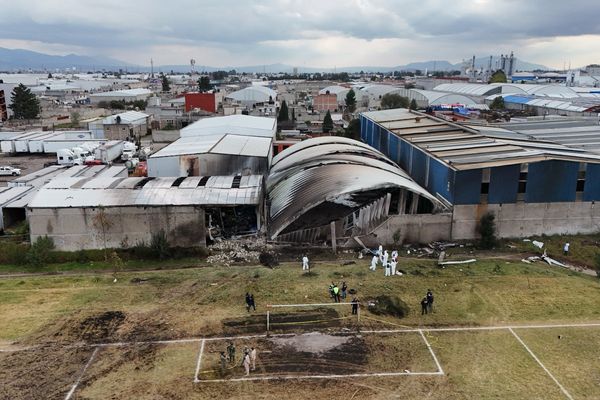Investing in AI infrastructure will result in significant GDP growth in the next few years, OpenAI predicts in a new regulatory filing shared first with Axios.
The big picture: OpenAI's big idea is that this isn't just about AI — it's America's shot at reindustrialization.
- In OpenAI's view, the race to secure computing power, modernize the grid and rebuild supply chains should supercharge U.S. manufacturing and energy production.
Driving the news: President Trump's AI action plan called for companies to tell the government what regulations stand in the way of AI's development. Comments are due Monday.
A new OpenAI internal analysis finds that the first $1 trillion invested in AI infrastructure could add more than 5% to GDP growth over a 3-year period.
- The company says the next five years will bring an immense need for electricians, mechanics and other construction trade workers — an estimated 20% of those existing workforces for OpenAI's purposes alone.
What's inside: The Office of Science and Technology Policy should prioritize "closing the 'electron gap'" between the U.S. and China by "setting an ambitious national target of building 100 GW a year of new energy capacity," OpenAI chief global affairs officer Chris Lehane wrote in the filing.
- The company also calls for the government to expand tax credits to AI-related sectors, and use AI to speed up federal permitting and environmental reviews.
- When "responsible" AI companies are conducting child safety red-teaming and safety evaluations, the Justice Department should provide them with immunity, Lehane wrote.
- The government should encourage more companies to partner with the Center for AI Standards and Innovation, "including by working with Congress to provide participating companies with liability protections such as preemption of state laws and regulations," per the filing.
Between the lines: If 2025 was about knocking down momentum toward federal AI regulations, 2026 is about getting the U.S. to help AI companies build the structure needed to carry out their ambitious agendas.
What they're saying: Lehane says OpenAI wants to do its part in reaching that energy goal through its Stargate sites.
- "In 2026 and beyond, we'll build on that progress by strengthening the broader domestic supply chain — working with US suppliers and manufacturers to invest in the country's onshore production of critical components for these data centers," Lehane wrote.
- "We will also develop additional strategic partnerships and investments in American manufacturing to specifically advance our work in AI robotics and devices."
Yes, but: The boom in AI infrastructure could be taking away energy and capital from other efforts to boost U.S. manufacturing. Spending on construction for new factories is down 2.5% this year so far but for data centers, it's up almost 18%, Bloomberg reports.
The bottom line: OpenAI is casting AI infrastructure as the new industrial policy.
- Read the filing, "Sizing up the AI opportunity."







